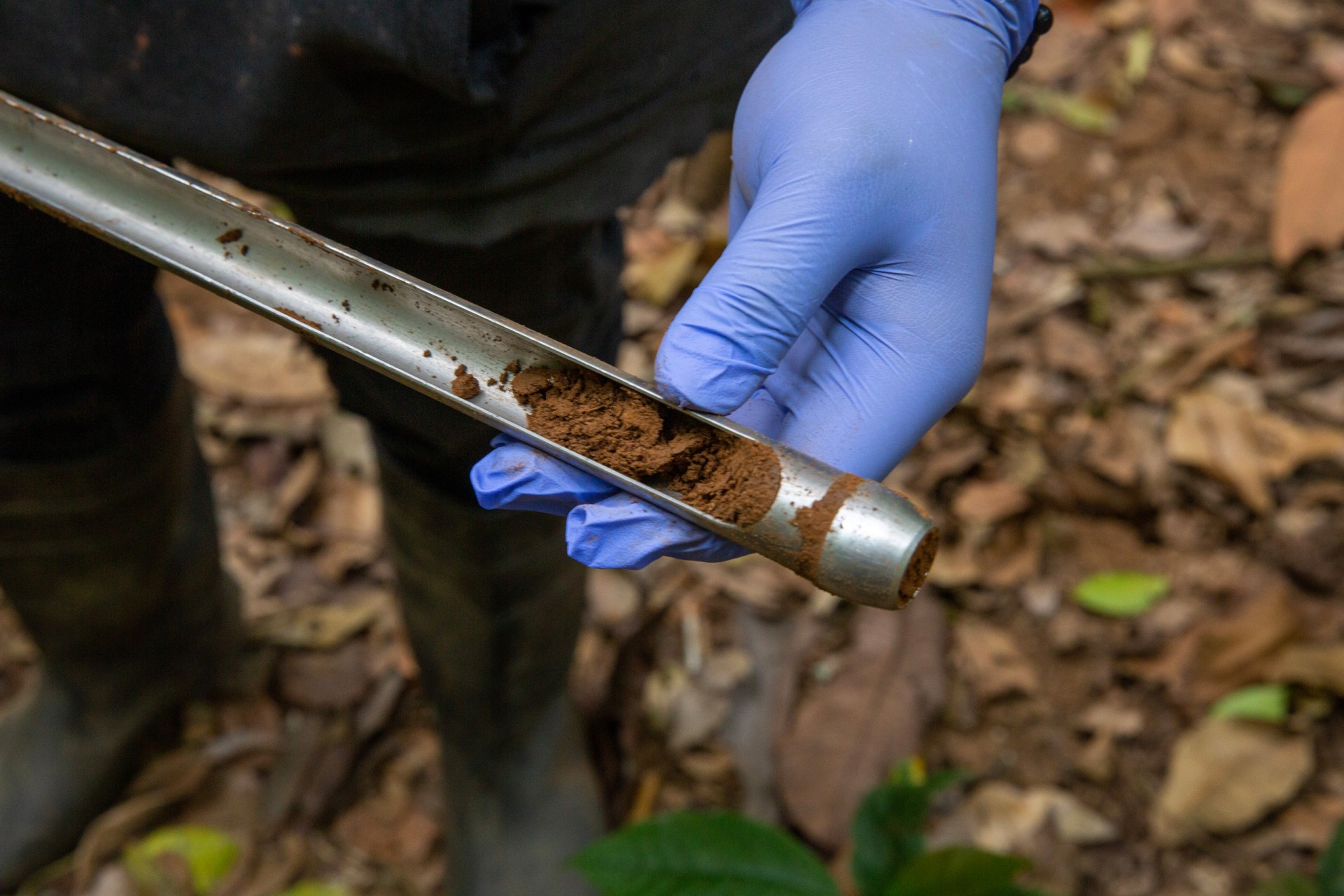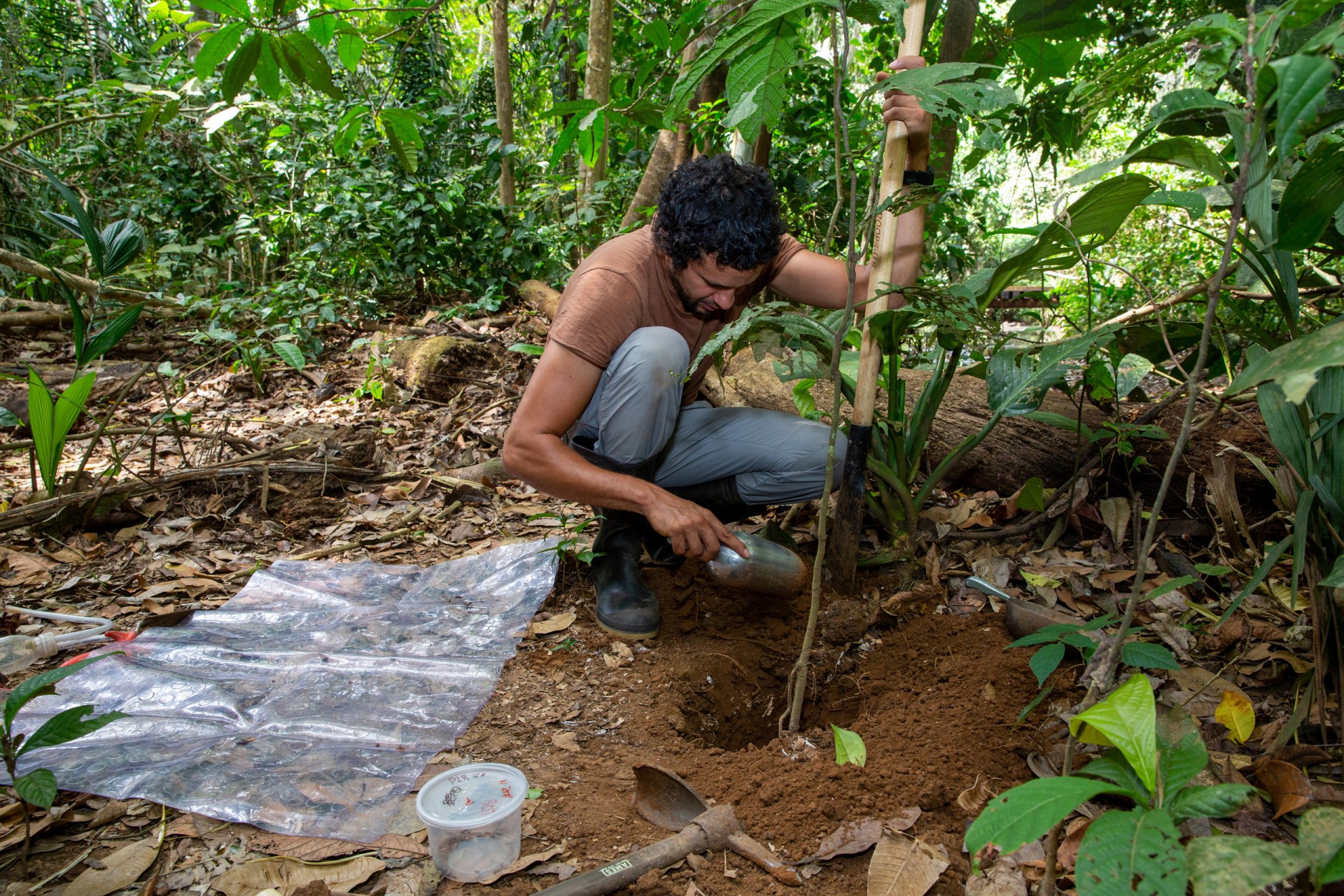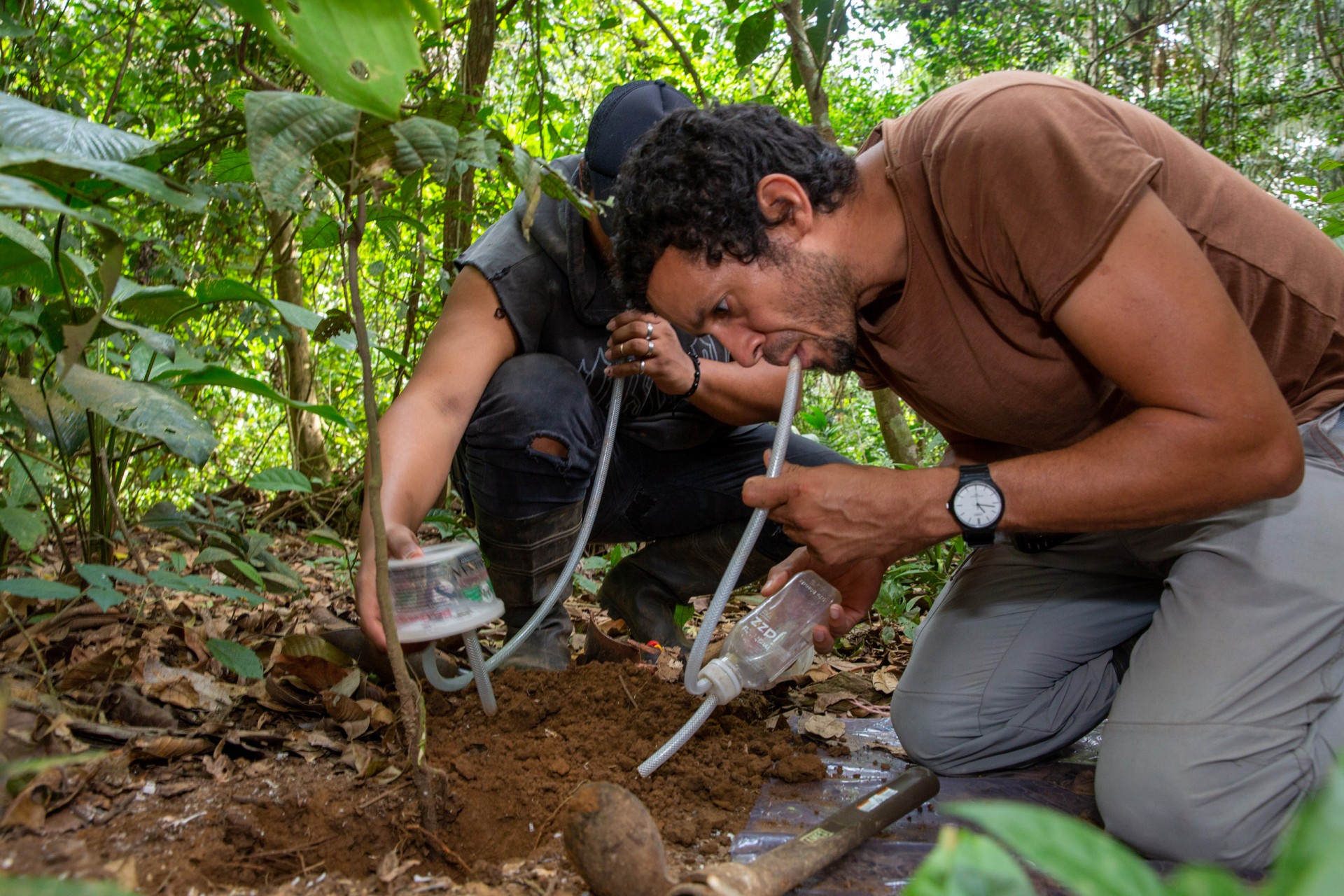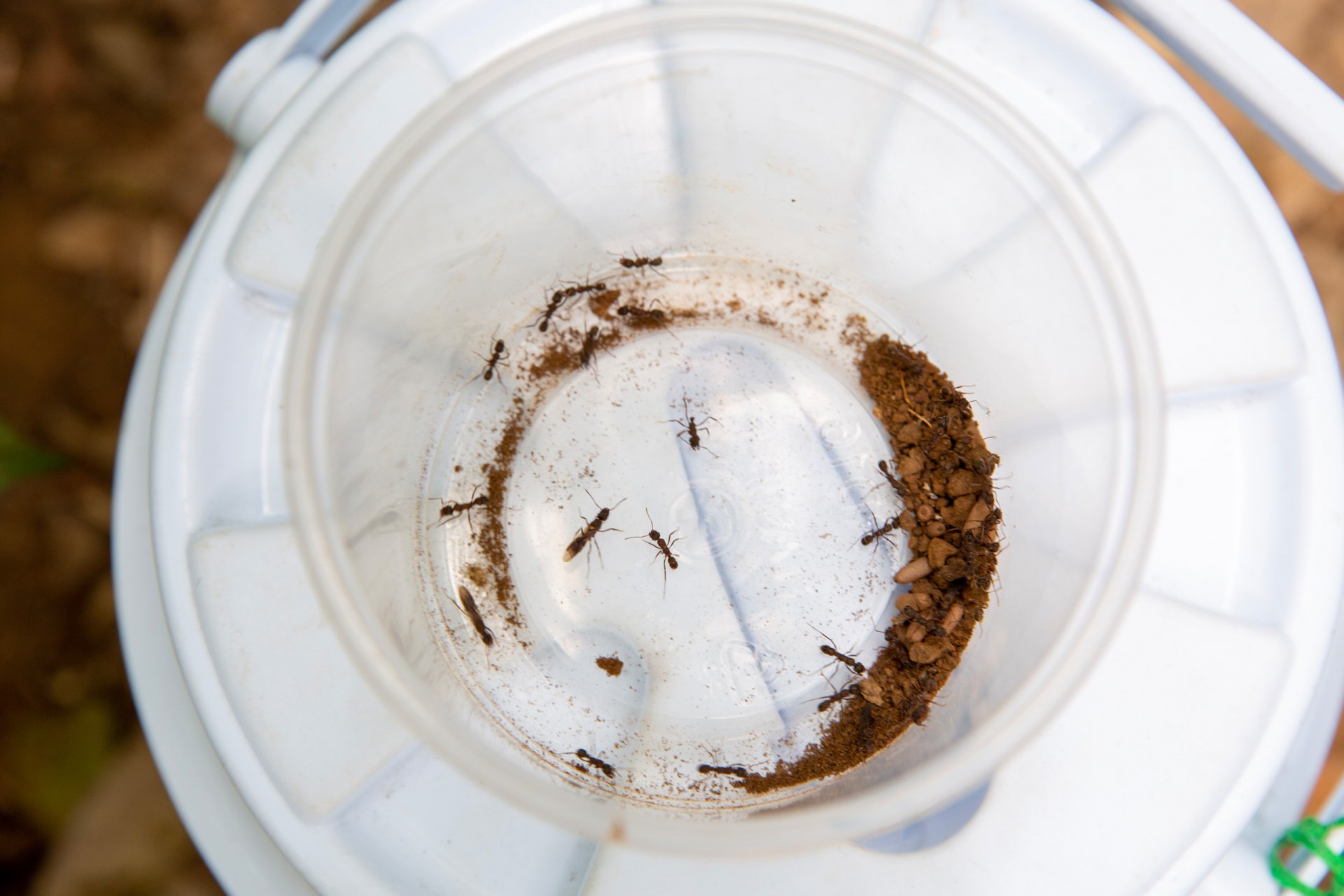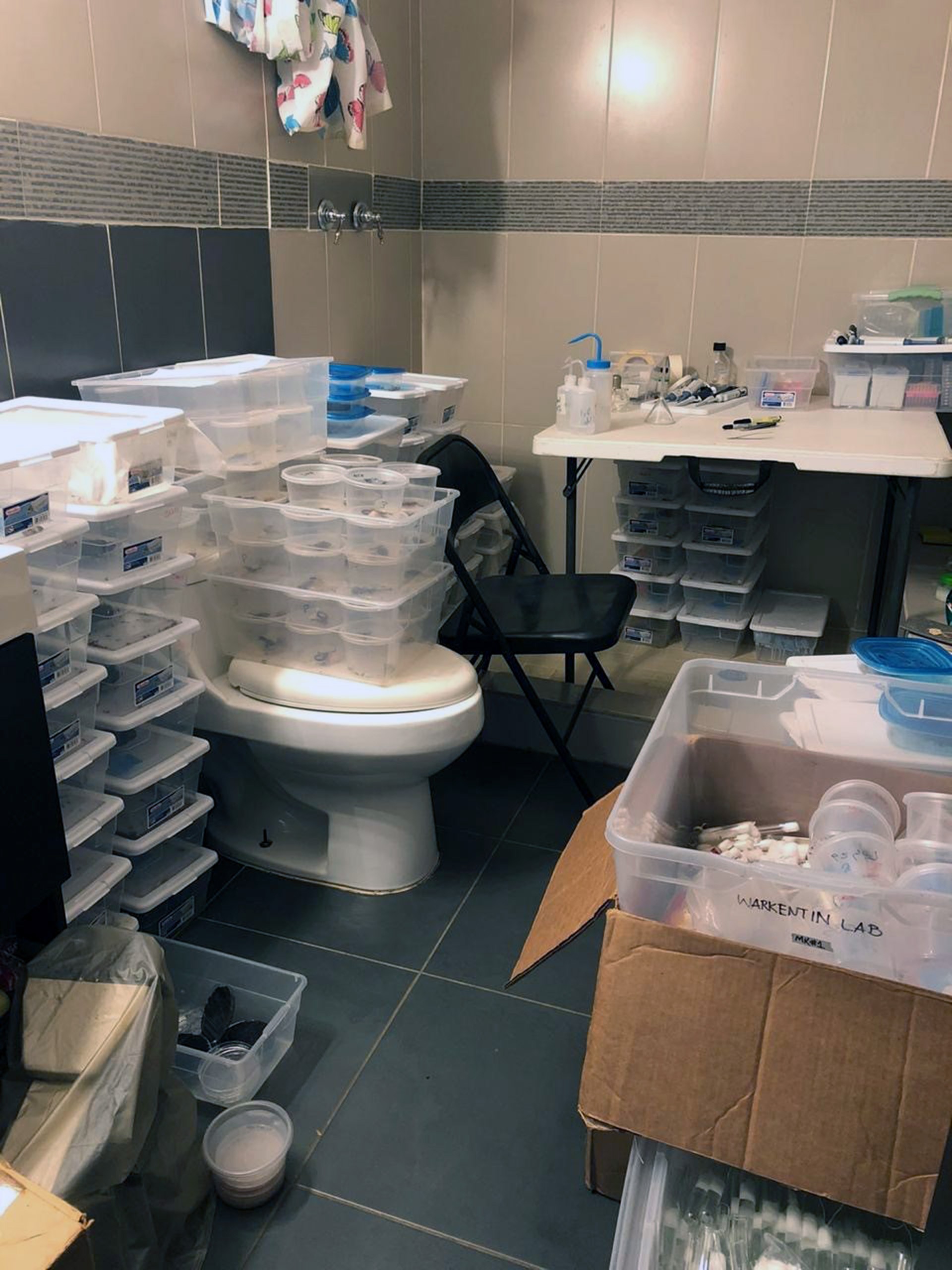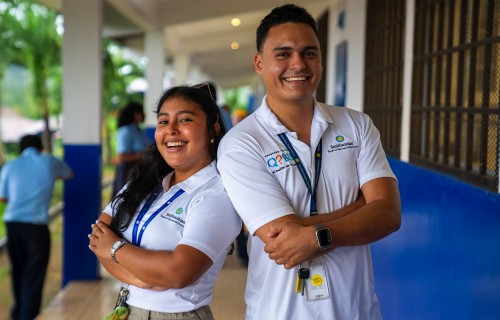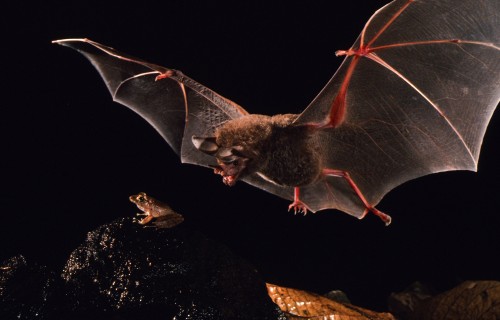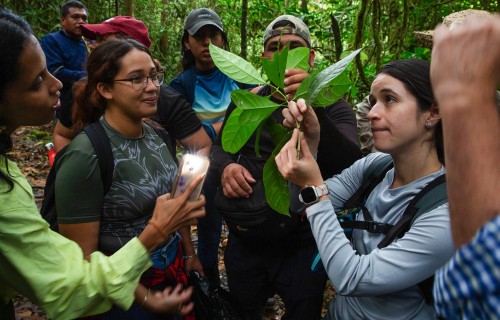Leafcutter ants have blind
spots, just like truck drivers
Cosmopolitan
Are city ants weaker?
Pipeline Road, BCI, University of Panama
Text by Leila Nilipour
To understand the effects of urbanization and forest loss on insects, Dumas Gálvez studies the ability of ants to defend themselves against diseases in the city and in nature
Shortly before the coronavirus health crisis began in Panama, Dumas Gálvez received unexpected news: he had been chosen as a fellow for the Secretary's Distinguished Research Fellowship, which would extend his research time for one more year at the Smithsonian Tropical Research Institute (STRI). It is the first time that a Panamanian receives this recognition from the Secretary of the Smithsonian in Washington, for which fellows from all Smithsonian research centers compete.
Dumas is one of several Panamanian scientists who discovered his passion for science at STRI. In his case, it was the tropical biology course offered by the Institute every year in the Gigante peninsula (part of the Barro Colorado Natural Monument) during his second year at the university. Although, he always carried that curiosity inside.
At five years old, living in La Chorrera, he discovered two fire ants’ nests in his yard. He began to give leftover food to one nest and not to the other. He soon realized that the ants he was feeding roamed his hand without harming him, while those in the other nest would bite him.
"I thought that it was related to my smell: they associated it with food and that's why they didn't attack me," he recalls.
After studying plants, mammals and birds throughout his career, when he completed his doctorate in Ecology and Evolution at the University of Lausanne (Switzerland), he returned to his childhood fascination: ants. And they are his focus as a postdoctoral fellow, under the guidance of STRI scientist Sabrina Amador. On March 6th, three days before the first case of COVID-19 in Panama was confirmed, he went to the Pipeline Road armed with a pickaxe, a shovel and oats, to search for nests of the species he studies, Ectatomma ruidum.
Ants like oats. They collect it from the ground and take it to their colonies, revealing the location of the nest. With their tools, Dumas and his assistant Eleodoro Bonilla, a biology student at the University of Panama, went into the different chambers of a nest, collecting the ants from the colony until they found the queen: an indication that they had reached the last chamber.
He has done the same with nests in Panama City, Paraíso, the Camino de Cruces and Barro Colorado Island. His question is simple, but ingenious: he wants to compare the immune system of ants in urban areas —that is, their natural defense against diseases— with the immune system of ants living in the forest. To do this, he infects them with a fungus and measures their survival.
In addition to comparing their immune systems, Dumas is comparing the diversity of pathogenic fungi among the different soils. And he hopes to eventually study the species on a genetic level as well. This would require the support of colleagues at Panama’s Institute for Scientific Research and High Technology Services (INDICASAT-AIP).
"What if we find differences in ant resistance, but they have nothing to do with fungi?" He asks. "It could be that among ants in a certain place there is more inbreeding, and that it reduces the diversity of genes associated with defenses."
What is all this for us? Ants that live in urban sites or pastures, as well as the fungi that make them sick, experience drier and hotter conditions than those in forests. In turn, with the continuous growth of urban areas and the loss of hectares of tropical forests every year, the planet is getting hotter and drier.
In order to continue advancing his research during the quarantine, Dumas transported 70 ant colonies to his house and accommodated them in his spare bathroom.
Dumas' project will allow us to understand how these conditions influence the interaction of ants with the fungi that make them sick. And this could open a new line of research in Panama, related to the immune system and the natural threats of insects that are important for agriculture and the economy, such as bees, or for our health, such as those that transmit diseases. In general terms, it also contributes to our understanding of how the simplest organisms will adapt to climate change, something that we will all have to do.
And just as Dumas is opening the door to a new research approach, he is also thinking about the next generation of scientists. One of his greatest gratifications is being able to have an influence in the education of students, as a professor in the entomology program at the University of Panama.
“Dumas knows how to recognize collaborators in his colleagues, and has an impressive commitment to the education of young Panamanian scientists. He is the type of person that will move science and education in Panama forward,” emphasizes his advisor Sabrina Amador, staff scientist at STRI.
It has been a few weeks since the young scientist was able to go outside to collect E. ruidum nests and his research process has slowed down. When the coronavirus quarantine was implemented in Panama, Dumas’ entire research infrastructure was in a Gamboa laboratory. Now he keeps 70 colonies of ants in a bathroom that no one uses in his home. And this temporary solution has allowed him to keep moving forward during the pandemic.


